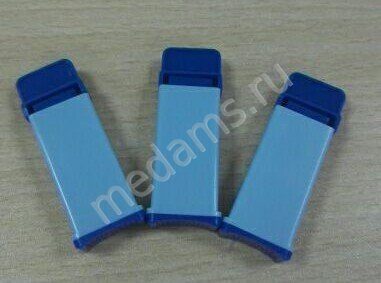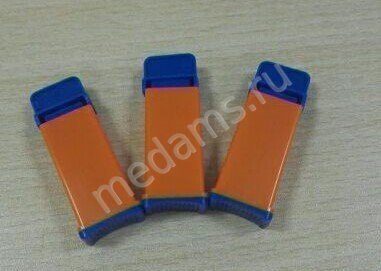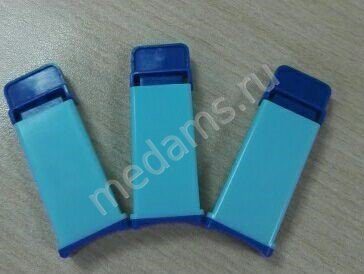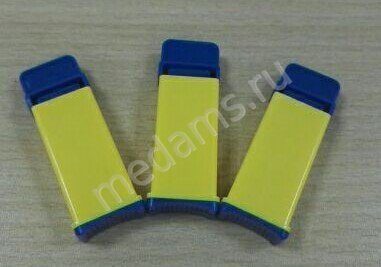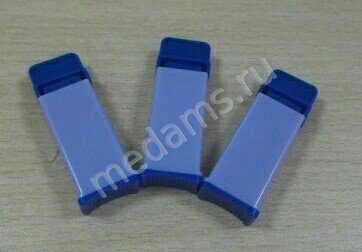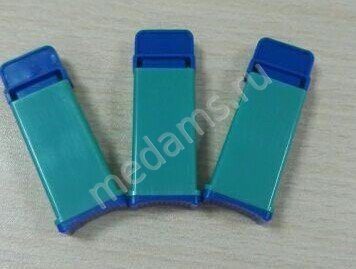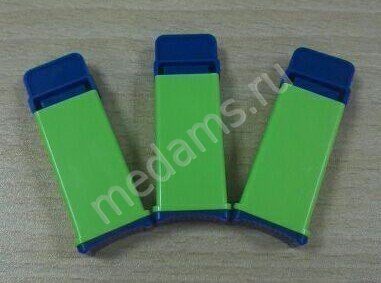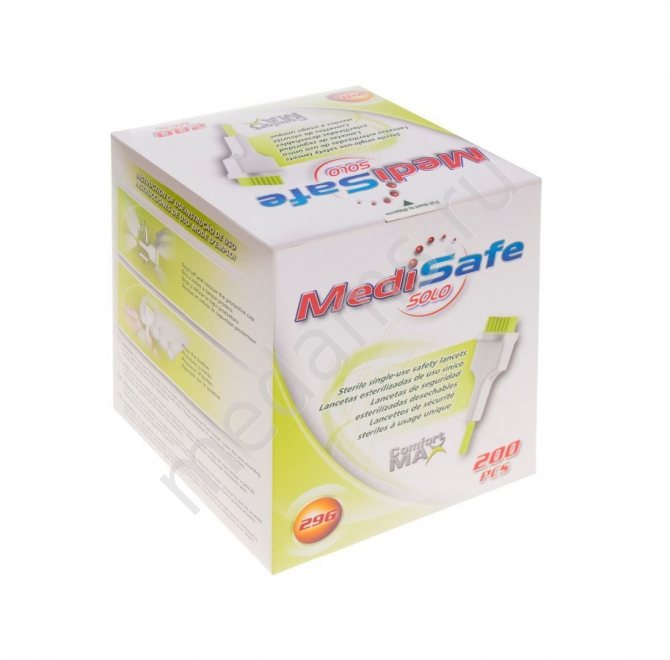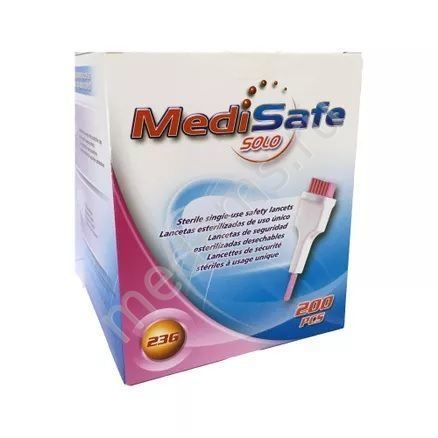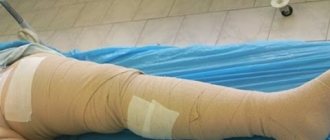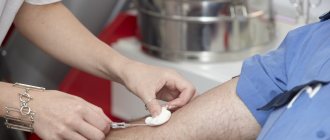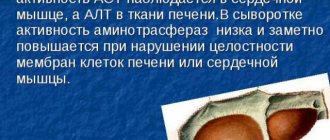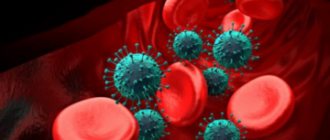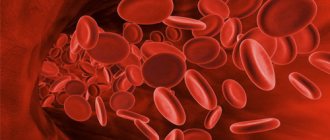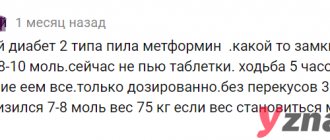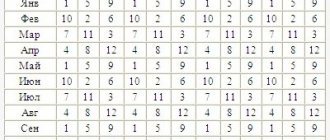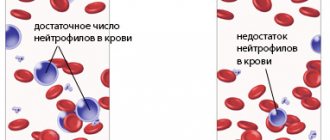Automatic lancets
- Automatic scarifier (lancet) “Cerebrum”, China
- Automatic lancets "Qlance", China
- Automatic scarifier (lancet) “MediSafe solo”, Poland
- Automatic scarifier (lancet) “MEDLANCE Plus”, Poland
A lancet is a device used to draw blood from a baby's finger, earlobe, or heel. The lancet is a plastic body into which a thin needle is inserted. When using the lancet, pain is minimized, as well as tissue damage.
Varieties
Lancets that can be used as consumables for a glucometer are divided into:
- universal;
- automatic.
The first type of device is needles that fit most pens for a glucometer. However, there are exceptions among a number of devices, which are usually reported by the manufacturer. At the same time, it is clearly indicated which modifications of the handles are compatible with universal needles. Therefore, it is important to carefully study the information on the packaging.
Automatic lancets are equipped with replaceable needles. The advantages of models with this type of device are:
- disposable use of needles (after use, they are disposed of or stored in a separate compartment);
- high degree of security;
- automatic detection of finger puncture depth;
- replaceable drum with needles for convenient and safe use;
- additional protective mechanism (glucometer Kontur TS);
- individual selection depending on the patient’s age and skin type.
Automatic lancets for glucometers Kontur TS, like Accu-Chek models, prick the finger most painlessly when a blood test is performed. In this case, skin damage is minimal. Therefore, the finger heals faster, which is an important criterion for people who take measurements at least 5-6 times a day. Certain needles of this type are activated when a finger is placed directly next to them.
Automatic scarifier (lancet) Cerebrum
Automatic lancet Cerebrum, sterile, single-use, with one-click puncture activation, is used for collecting capillary blood samples from a finger (earlobe, heel) from adults and children in medical institutions, laboratories, and also at home.
All lancets are color coded depending on size. The product is made of a plastic case. The needle material is stainless medical steel. Automatic activation process at the moment of direct contact with the skin. After a puncture, the lancet needle automatically retracts back into the plastic case to ensure safety, which eliminates its reuse.
| Name of product | Description | Photo |
| Lancet with 21G needle, puncture depth 1.8 mm | Color: gray-blue Needle size: 21G Puncture depth: 1.8 mm Blood sample 10-30 µl. Suitable for collecting blood from preschool children and adults. |
|
| Lancet with 21G needle, puncture depth 2.2 mm | Orange color Needle size: 21G Puncture depth: 2.2 mm Blood sample 30-70 µl. Suitable for collecting blood from patients with average blood flow. |
|
| Lancet with 21G needle, puncture depth 2.4 mm | Blue color Needle size: 21G Puncture depth: 2.4 mm Blood sample 30-70 µl. Suitable for collecting blood from patients with rough skin or weak blood flow. |
|
| Lancet with 26G needle, puncture depth 1.8 mm | Yellow color Needle size: 26G Puncture depth: 1.8 mm Blood sample at least 10 µl Suitable for patients with delicate skin or receiving small amounts of blood |
|
| Lancet with 28G needle, puncture depth 1.8 mm | Color: lilac Needle size: 28G Puncture depth: 1.8 mm Blood sample up to 10 µl Suitable for patients with delicate skin or receiving small amounts of blood |
|
| Lancet with 21G blade, puncture depth 2.0 mm | Green color Blade size: 21G Puncture depth: 2.0 mm Blood sample 70-100 µl. Suitable for obtaining large quantities of blood from adults, as well as for collecting blood from infants and preschool children. |
|
| Lancet with 18G blade, puncture depth 1.8 mm | Color: light green Blade size: 18G Puncture depth: 1.8 mm Blood sample up to 100 µl. Suitable for obtaining large quantities of blood from adults, as well as for collecting blood from infants and preschool children. |
|
* Attention! The actual color of the product may differ from the color of the product in the photo.
Mode of application:
- Wipe the puncture site with an alcohol wipe;
- Remove the protective cap of the lancet by turning it clockwise. Attention! Don't pull the cap!
- Place the lancet firmly on the intended puncture site and press the lancet onto the puncture site. When pressed, the needle/blade will automatically puncture and disappear after use;
- Using a test tube or capillary, collect the required amount of blood;
- Dispose of the lancet in accordance with the rules of the medical institution where the blood was collected. The needle/blade will remain inside the lancet to prevent reuse.
Packing : 100 pcs/inner box; 1000 pcs/transport box.
Sterilization: Sterilized by gamma rays.
Shelf life : 5 years. Do not use after the expiration date
Storage conditions : store in a well-ventilated area and relative humidity up to 80%. Avoid moisture and direct exposure to sunlight
, China / Yancheng Huida Medical Instruments Co.Ltd.
Lancet with needle, price: 4.40 rub.
Lancet with blade, price: 4.50 rub.
How to use a lancet to collect blood?
- November 14, 2019
- Child's health
- Svetlana Pavlova
Patients who consult a doctor are often prescribed diagnostic procedures, the most common of which is a general blood test.
Some time ago, special devices called scarifiers were used for this. Their main disadvantage is pain when piercing the dermis. Today they have been replaced by more advanced devices - lancets.
How to use this device? This will be discussed in the article.
What is this device?
The lancet is intended for single use when taking capillary blood for analysis. This is a specially designed special device that prevents injury to the phalanges of patients' fingers when it is necessary to repeatedly take blood for analysis.
The lancet has an ultra-fine needle that is painlessly inserted under the dermis and leaves no marks. The device is automated and is activated when you press a special button or touch the skin. Sterility is ensured by a plastic removable cap. The blood collection procedure lasts only two to three seconds.
Disposable lancets
Modern devices used to take blood for analysis greatly facilitate the procedure. There is no discomfort or pain at all. They are most suitable when you need to frequently monitor your blood composition. How to use a disposable lancet?
Step-by-step instruction:
- Use an alcohol wipe to disinfect the puncture site.
- Turn clockwise and remove the protective cap.
- Load the needle holder and adjust the puncture depth.
- Place the device firmly on the side of your fingertip and press the “Start” button. There are models that are triggered when the body comes into contact with the surface of the dermis.
- Using gentle pressure on your finger, draw blood.
The disposable device cannot be reused; immediately after the procedure is completed, the needle is blocked and the device must be disposed of. This ensures that the infection cannot spread from person to person.
Devices for children
They stand out in a separate category and have very thin and sharp needles so that the baby does not experience fear before the procedure, which worsens blood counts. How to use children's lancets?
They are used according to the following scheme:
- unscrew and remove the cap;
- press the body of the device tightly against the child’s finger – it will work automatically;
- Using gentle pressure, select the required amount of biomaterial.
As you can see, using the lancet is not difficult.
Following the procedure, the needle is automatically retracted into the body and locked. All devices for collecting blood for analysis in children are disposable and are disposed of after use. But before this manipulation they are disinfected in an autoclave, after which they become safe garbage that can be thrown away.
Accu-Chek FastClix Lancets
These devices, easy to use, have been specially designed to painlessly prick a finger or earlobe to obtain a drop of blood. The depth of the puncture is selected depending on the individual characteristics of the skin. The structures are intended for individual use only to avoid infection.
When installing or replacing you must:
- twist the protective cap;
- when replacing, remove the old lancet by pulling the sliding sector;
- place the new lancet in the holder and press until it stops;
- screw on the cap;
- make sure that the notch on the cap is aligned with the center of the semicircular cutout on the sliding sector.
Instructions for using “Accu-Chek FastClix”
How to use the lancet? To obtain a drop of blood you must:
- Conduct preliminary preparations. Wash your hands with warm water and soap and wipe dry. This promotes hygiene and better blood circulation. The puncture is made on the surface of the fingertips on the side, where there is minimal pain.
- Depth selection. There is a puncture depth regulator on the cap of the device. When using the device for the first time, set it to the mark with value 2. After that, check whether you did it correctly.
- Taking blood. Press the cocking button all the way. The readiness of the device for operation is determined by the yellow eye in the transparent window of the shutter button. Press the device against your fingertip and press the shutter button.
If a drop of blood does not form, increase the depth of the puncture and repeat the steps again.
Types of lancets for glucometer
These devices are used to draw blood from a finger or earlobe and consist of a sterile needle inserted into a handle. The manufacturer of the device describes in detail how to use the lancet in the attached instructions.
All lancets are divided into two types:
- Automatic - a device with replaceable needles that automatically determines the depth of the puncture and draws blood. Equipped with protection - you cannot use the same needle twice. Works only in contact with the surface of the skin. After using the needles, the drum with them needs to be replaced.
- Universal - consists of a small needle and practically fits any glucometer, otherwise the packaging indicates the types to which it is not suitable. For protection, reliability and convenience, devices are often available with a protective cap and a piercing depth regulator.
Lancets for the Van Touch Select Plus glucometer
For a compact and easy-to-use glucometer from this company, they use a special device for piercing the skin, which regulates the depth of the puncture. Let's look at how to use lancets for a glucometer of this model, step by step:
- Wash your hands thoroughly and wipe dry.
- Insert a new lancet into the handle and set the puncture depth.
- Insert a test strip and the device will automatically turn on.
- Place the piercing pen on the side of your fingertip and press the button.
- The appearance of a flashing drop on the screen signals that the device is ready for operation.
- Apply the strip to a drop of blood on your finger and it will be automatically absorbed. After a few seconds, the result will be displayed on the screen.
After removing the test, the device will turn off on its own.
Features and benefits of automatic lancets
Some time ago, a metal “pen” was commonly used to draw blood. The procedure was accompanied by pain and burning, and caused fear in children. Modern automatic lancets, which are much more convenient to use, do not cause pain, ensure safety and make the procedure quick and comfortable. The device is closed with a cap and stored in a special case.
Before use, the cap is unscrewed, the needle extends when you press the button or when it comes into contact with the surface of the dermis. After completing the procedure, the needle is blocked in the body, which prevents the instrument from being reused.
The advantages of automatic lancets include:
- Lack of the human factor - strong or insufficient physical effort, hand trembling.
- Safety for patients - reuse is excluded.
- Ease of use - no special training required.
- Non-hazardous for medical staff - the needle is protected and blocked after drawing blood.
- The devices are very convenient and easy to use. Even children quickly learn how to use the lancet and are able to use them independently.
- Comfort – thin needles with a special sharpening do not cause pain, you can safely use the device for infants, after the puncture there is no irritation on the finger.
- The needles are ready for use and do not require additional processing or sterilization.
There are a large number of companies that produce these products. It is in great demand in medicine. The price of the device is reasonable; anyone can purchase it.
Restrictions
When purchasing lancets, many people ask whether there are any restrictions on their use and whether one lancet can be used several times. The attached instructions state that:
- Do not use the device if the protective cap is missing or damaged.
- The needle is intended for one-time use only. It is forbidden to use the lancet more than once. For each puncture, you must use a new sterile needle.
- The device is intended for individual use only.
- To ensure the safety of infection, disposal is carried out with the cap tightly latched, observing safety precautions.
- Keep out of the reach of children.
Please remember that the device cannot be used after the expiration date.
How often should lancets be changed?
All needles are automatic and universal; it is recommended in all instructions for the glucometer to use them only once and then change them. Lancets are sterile, but after blood collection they lose this property. To avoid serious consequences, it is necessary to replace the lancet after use.
For this:
- Automatic needles are equipped with additional protection that prevents the patient from reusing them. Therefore, they are considered reliable and safe. It only takes a few seconds to draw blood. And you already know how to use a lancet.
- In the case of universal needles, this option is not available. Many diabetics who need to draw blood more than once a day use the devices repeatedly to save money. But they take risks and violate the instructions.
In addition, each time the needle becomes dull, the puncture becomes more painful. And in the area of damage to the skin, inflammation may begin.
How much do needles for a glucometer cost?
The cost of lancets depends on:
- number of copies per package;
- material quality;
- manufacturer.
Universal needles are very popular among consumers because they are the cheapest. You can buy them at any pharmacy. Sold in packs of 25, 50, 100 or 200 pieces. The price range is very large. The minimum package can cost from 400 rubles.
Conclusion
After reading the article, you have learned how to use a lancet to draw blood. This convenient device is widely used among adults and children. The needle is sharpened by a laser, so the puncture is invisible and painless.
The lancet is often used at home. It is sterile, safe and does not cause discomfort. The most popular are universal and automatic devices. Needles are stored for no more than three months, so you need to plan their consumption so as not to buy extra ones.
Source: https://parentchild.ru/478130a-kak-polzovatsya-lantsetom-dlya-zabora-krovi
Automatic Qlance lancets
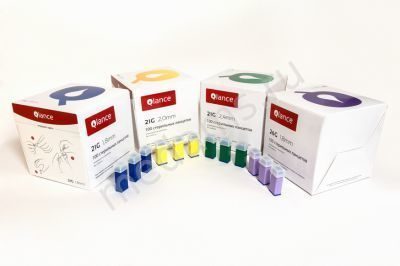
Qlance lancets are very convenient to use, they practically do not injure the skin, and the puncture itself is quite painless. Manufacturers took care of the reliability and sterility of the lancets, equipping them with a mechanism that does not allow the device to be reused. In addition, everyone can choose a lancet according to the thickness of their skin. Lancets for children are in particular demand , as they are very convenient to use when it is necessary to take blood from a child. Such devices allow you to take blood quickly without causing pain to the baby. For this, the thinnest needles, sharpened on all sides, are used, and wound healing occurs faster.
Lancet Qlance species
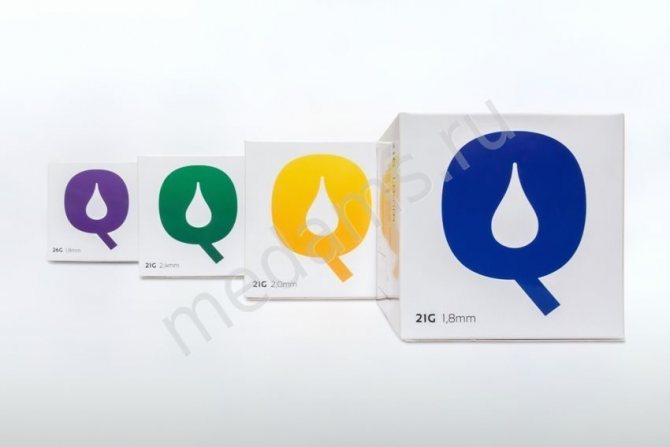
Lancet Qlance Lite 1.8 mm purple
Needle: 26 G (0.45 mm) Puncture depth: 1.8 mm Recommendations for users: for children Blood sample: up to 10 µl Package: 100 pcs. Price: 3.75 RUR / pcs.
Lancet Qlance Universal 1.8 mm blue
Needle: 21 G (0.8 mm) Puncture depth: 1.8 mm Recommendations for users: for children Blood sample: from 10 to 30 μl Package: 100 pcs. Price: 3.75 RUR / pcs.
Lancet Qlance Special 2.0 mm yellow
BLADE: 2.00mm Puncture depth: 0.8mm Recommendations for users: for adults Blood sample: 70 to 100 µl Package: 100 pcs. Price: 4.83 RUR / pcs.
Lancet Qlance Extra 2.4 mm green
Needle: 21 G (0.8 mm) Puncture depth: 2.4 mm Recommendations for users: for adults Blood sample: 30 to 70 µl Package: 100 pcs. Price: 4.49 RUR / pcs.
Instructions for using Qlance lancets
1. Remove the protective cap; 2. Place the lancet firmly on the puncture site and press the lancet onto the puncture site. (When pressed, the needle will automatically make punctures and disappear after use); 3. Using a test tube or capillary, collect the required amount of blood; 4. Discard the lancet. The needle will remain inside the lancet to prevent reuse.
, China
Description of the glucometer
The pharmaceutical market is replete with a variety of glucometers. The TC Contour is a compact and easy-to-use sugar content meter. German quality guarantees the accuracy of the research results.
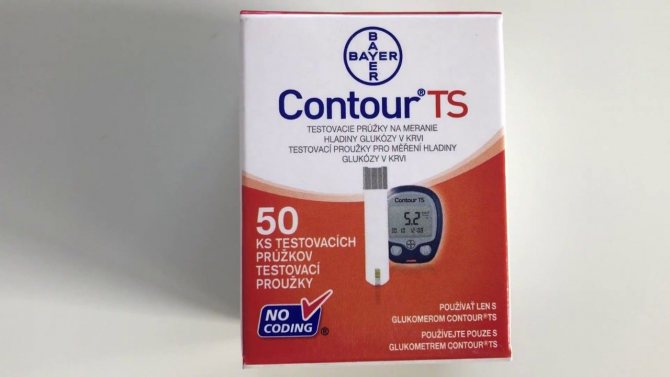
Advantages of Kontur - TS:
- high accuracy of results;
- the device does not require coding before starting work;
- A small amount of blood is suitable for analysis;
- the body of the glucometer is covered with a shock-proof compound;
- the device has a built-in memory function;
- During the analysis, the patient receives information about the ratio of blood cells.
The Kontur-TS glucose meter is sold as a complete set. It includes:
- storage case;
- glucometer;
- piercing pen;
- sterile lancets;
- power unit;
- warranty documents and instructions.
Glucometer Kontur-TS is a device for self-monitoring. It has proven itself to be a reliable and accurate meter.
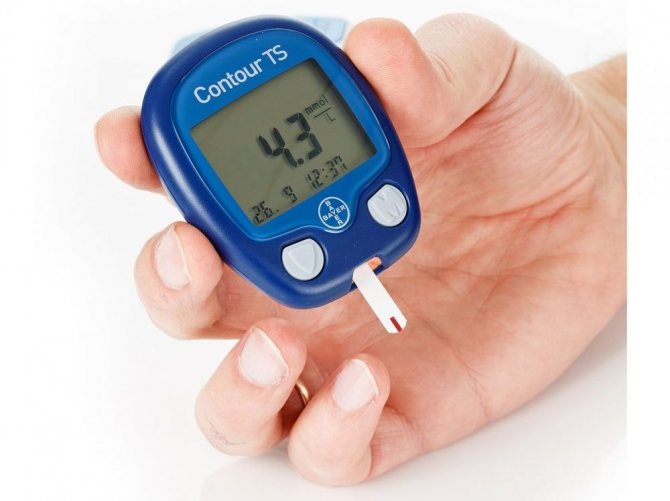
Automatic scarifier (lancet) MediSafe solo
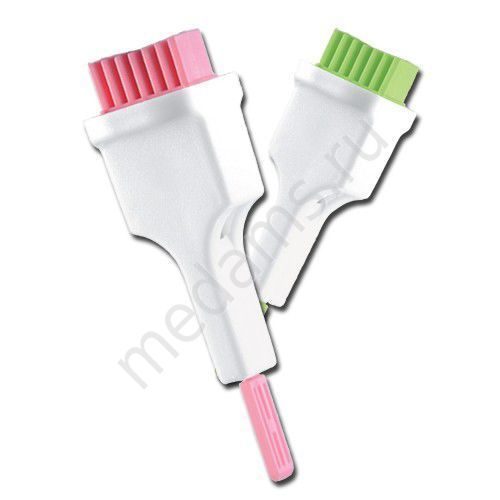
MediSafe solo lancets make it possible to avoid severe injuries to the phalanges of the fingers in those patients who require daily capillary blood collection
Advantages
- Easy to use. thanks to the V-shape design.
- Wide and long protective cap for easy removal.
- Two-stage work.
- The efficient needle design (ultra sharp, fine needle) provides an optimal blood sample with minimal pain. Maximum penetration speed.
MediSafe solo lancets - for testing glucose, hemoglobin, cholesterol, blood type, etc.
Application
Unscrew the protective cap and pull it out. Place the MediSafe Solo on the desired puncture site and press the top button to activate the device. Apply intermittent pressure carefully near the puncture site to obtain the required volume of blood.
Dimensions:
The MediSafe Solo lancet includes two sizes with 23G and 29G needles:
| Name | Application area | Photo | Quantity, pcs. in pack | Price |
| Automatic lancet MediSafe Solo 29G 1.5 mm | for children, for capillary blood collection, for glucometer |
| 200 | RUB 931.00 |
| Automatic lancet MediSafe Solo 23G 2.0 mm | for capillary blood sampling, for testing for glucose, hemoglobin, cholesterol, blood group, coagulation, blood gas, etc. |
| 200 | 1047.00 rub. |
, Poland
Lancets for painless finger-prick blood collection in children
Many children are afraid to donate blood because they have already undergone this procedure in the past and remember the pain caused by a standard scarifier. However, in our time, the blood sampling procedure can be performed painlessly if a special disposable lancet is used to collect the sample.

A lancet is a special device with a plastic body, with which blood is taken from the capillaries of children for a general blood test, as well as for measuring blood sugar. The special design of the device hides the needle, so the child does not see it when taking a blood sample. The needle has a triangular shape, and medical steel is used for its manufacture.
The needles for drawing blood in such lancets extend either automatically when the body comes into contact with the skin, or after an adult’s finger presses a button.
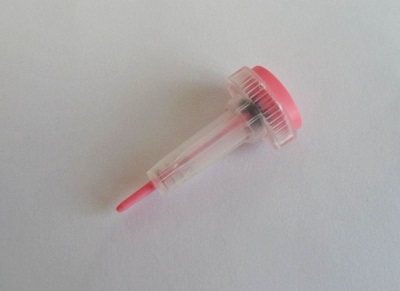
- Using a lancet does not cause pain to the child and does not leave bruises. The strength and depth of the puncture does not depend on the pressure on the finger of the nurse or parent.
- The instrument is completely sterile and packaged in a sealed container, which is opened immediately before the procedure. Before packaging, all lancets are treated with gamma radiation.
- The procedure using the lancet lasts only a few seconds.
- Blood test results will be more reliable. Emotional experiences when piercing a finger with a conventional scarifier can affect the effectiveness, so using a lancet will help avoid mistakes. In addition, the blood does not come into contact with air after collection.
- The Lancet can be used at home to easily test your glucose levels (using a glucometer).

Automatic scarifier (lancet) MEDLANCE Plus®
An automatic disposable sterile scarifier is used for modern, painless collection of capillary blood from patients in hospitals, clinics, veterinary clinics and other medical institutions. The ultra-fine needle of the automatic lancet penetrates the skin easily and quickly, which reduces pain, prevents damage and accelerates wound healing. The device is in convenient contact with the puncture site, and the procedure is completely safe for both medical personnel and the patient. In an automatic scarifier, the needle is located inside the device, both before and after use. This eliminates the possibility of harm, accidental use and the risk of medical personnel coming into contact with blood. In addition, all modern lancets are sterilized, which makes their use safe for patients and staff.
The sterile disposable lancet Medlance plus has an ultra-thin needle of different sizes (G25, G21 and 0.8 mm feather) which very easily penetrates the skin, and different depths of puncture of the patient’s skin, since the pressure at the puncture site is strictly calculated. This ensures complete and definitive control of the penetration depth and the availability of a sufficient amount of blood sample.
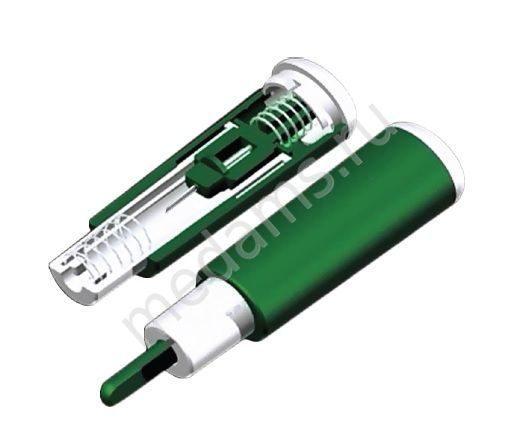
Medlans Plus Lite (MEDLANCE Plus Lite)
Needle: 25G Puncture depth: 1.5 mm. Recommendations for users: Suitable for all categories, ideal for controlling blood sugar levels. Blood Flow: Low
Medlans Plus Universal (MEDLANCE Plus Universal)
Needle: 21G Puncture depth: 1.8 mm. Recommendations for users: Suitable for situations where a large blood sample is needed to measure glucose, hemoglobin, cholesterol, blood group, coagulation, blood gases, etc. Blood Flow: Medium
Medlans Plus Extra (MEDLANCE Plus Extra)
Needle: 21G Puncture depth: 2.4 mm. Recommendations for users: Suitable for patients whose skin is too rough or a large blood sample is needed (men and people engaged in manual labor). Blood Flow: Medium to Strong
MEDLANCE Plus Special, blade
Needle: blade - 0.8 mm. Puncture depth: 2.0 mm. Recommendations for users: Suitable for collecting blood from the heel in infants and from the finger in adults. The ultra-thin pen of the Special scarifier allows you to collect the required volume of blood and promotes rapid healing of the puncture site. Blood Flow: Strong
Video instructions for use Packaging: 200 pcs. in factory original box. Shelf life: 5 years , Poland
Scarifier (lancet) automatic price
| Name | Needle | Puncture depth | Photo | Package | Price per package |
| Medlans Plus Lite (MEDLANCE Plus Lite) | 25G | 1.5 mm | 200 pcs. | 1235,00 rub. | |
| Medlans Plus Universal (MEDLANCE Plus Universal) | 21G | 1.8 mm | |||
| Medlans Plus Extra (MEDLANCE Plus Extra) | 21G | 2.4 mm | |||
| MEDLANCE Plus Special, blade | blade - 0.8 mm | 2.0 mm | 1357.00 rub. |
Universal needles
Universal needles can be used with any glucometer. This type of needle is the most accessible for patients and is sold in almost every pharmacy.
Advantages of universal lancets:
- small puncture sizes;
- painless needle insertion;
- function for adjusting the depth of insertion of the lancet;
- sterility.
The depth of injection depends on the patient's skin type. For children, a needle is inserted at 2 levels, for women - at 3. For men whose skin is rough and thick, an injection at 4-5 levels is recommended.
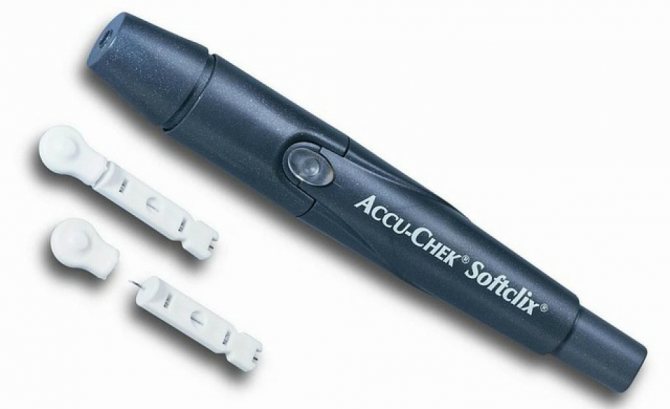
To select the correct puncture depth, sometimes it is necessary to carry out the corresponding manipulations several times at different levels.
Algorithm of actions
The blood collection process is carried out as follows:
- The patient enters the treatment room and assumes a sitting position. Then he extends his hand to the health worker.
- The nurse cleans the top of the ring finger with alcohol and dries the finger with dry cotton wool.
- Using a disposable scarifier, the doctor makes a 3 mm puncture. In this case, the first drop of blood is not used.
- Subsequent blood flows into a glass adapter and is then transferred into a prepared tube.
- After receiving a blood sample, the healthcare worker applies a cotton pad with an antiseptic to the finger, which is removed 5 minutes after the analysis.
- The test tube is signed by the doctor and sent to the laboratory for testing. Most often, the results are ready within 2 days after the procedure.
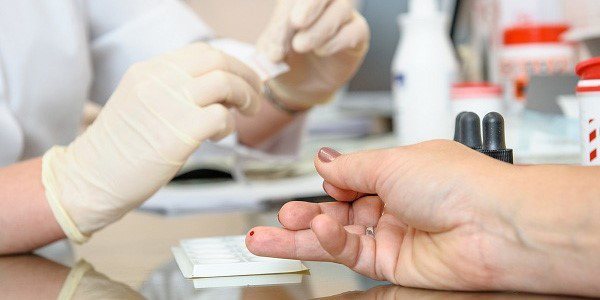
How does the procedure work?
Let's look at the procedure for collecting blood using a lancet:
- Before using the device, a medical professional removes the protective cap from the device.
- The lancet is pressed tightly against the patient's finger where the puncture will be made.
- Using gentle pressure, biological material is collected.
Externally, the blood sampling device resembles a small oblong plastic device. There are several variations of such mechanisms.
Automatic lancets are equipped with a very thin needle, which makes the blood collection procedure quick and painless. After the session is completed, there is no trace left and the skin does not hurt. There is no need to use additional devices to perform the procedure. The lancet itself collects blood upon contact with the skin. This type is often used in medical institutions for children under one year old.
This type is suitable for glucometers of any brand. This is very convenient for patients who need to monitor their blood sugar levels on a daily basis. The convenience of the universal device lies in minor damage to the dermis. To do the analysis, the lancet is inserted into a special handle that is adjusted depending on the thickness of the person's skin.
Children's lancets are a separate type. These devices are distinguished by their small size and sharp needles, which allows blood sampling to be performed as quickly as possible, without traumatizing the child’s psyche. They are especially convenient to use among infants.
